TAMIYA 1/48TH SUPERMARINE SPITFIRE Mk.Vb, RAF, ETO
Tonight we have my first completed build for 2015. First started in December, it was completed in January. Rather quick for me really, but this kit is really a straight forward easy to assemble model. As most know this who have built the Tam Spitfires. I was planning to post this sooner but finding time to edit and do a little write up for the subject sometimes doesn't flow at times.
This black Spit flew out of Dedben, Essex for night operations, though it only wore this scheme for only a month. Then the black stripped off and back to the standard day scheme, during the winter of 1941/42. No. 111 sqdn was one of the units assigned to start night fighting duties. With the Hurricane already flying missions at night, though not really a success, so the Spitfire was selected for it's speed. The concept lasted only 3 months. As the Spitfire was not suited for night missions, with it's narrow track it was difficult to take off at night and even more difficult to land coming in on a curved landing approach.. The theory of the concept was to vector the Spitfire to the target by searchlights, keeping the target illuminated as the Spit attacked the bomber and opened fire. The code name for this tactic was "Smack". Needless to say it was short lived. The accident rate compared to successful attack was to high. So the whole operation was suspended. This machine was flown by Pilot Flt Sergeant Peter Durnford, while flying one night he was credited with a probable hitting a BF-110.
The kit is molded in grey styrene. I used Eduards cockpit zoom set and Victory's wonderful "Aces of the Empire" decal sheet VPD 48006 for this unusual scheme. I used Tamiya Night Black, for the overall scheme. I also used Polly S Oily Black, which is more of a Charcoal black, (very dark grey) on the flying surfaces and various panels randomly to offset the jet black look. Aeromaster War Color Acrylic for the Interior Grey/Green, Testors Steel for the silver bits. Lifecolor Flat clear coat for the final finish really aged the finish.
A fun and fulfilling model to build to one of the most beautiful but deadly fighters of WWII, one of my favorites. Thanks for viewing.
Chuck
Fly Navy
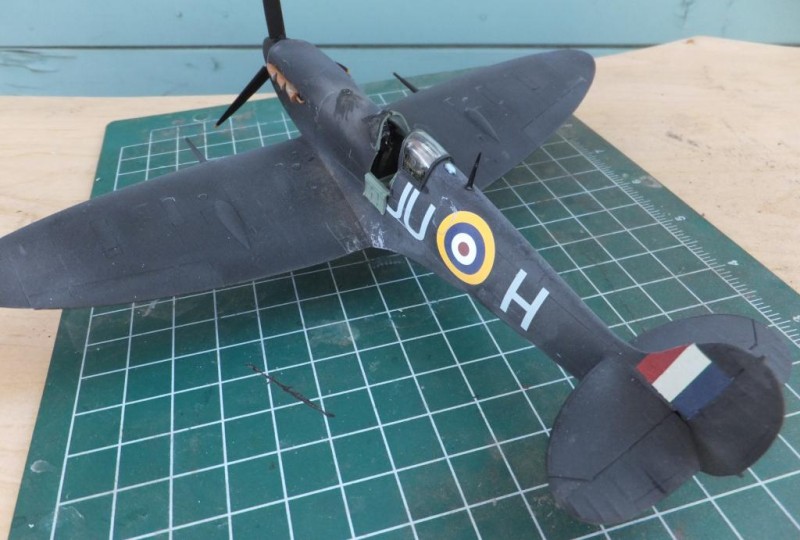
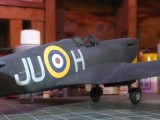
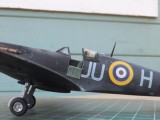

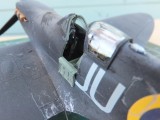
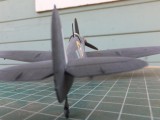
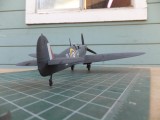
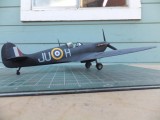
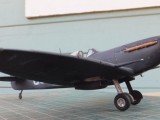
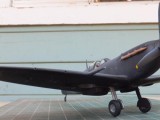
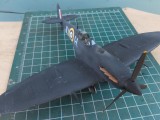
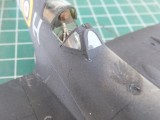
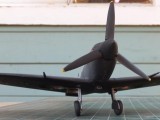
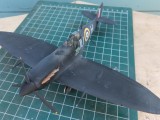
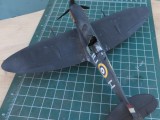
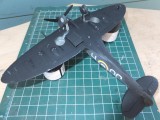
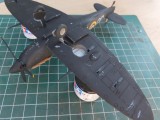
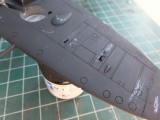
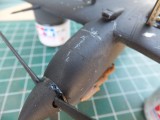
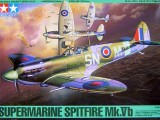
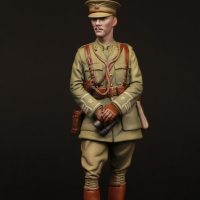
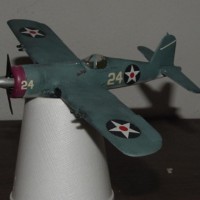
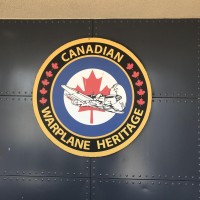
I like the black scheme! It makes the Spitfire look even more menacing. Well done!
Thanks Morne, it does have a sinister look about it, but it's graceful lines to me are more enhanced in this scheme, other than the F-82 Twin Mustang, don't recall an overall black Mustang.
Nice Spitfire Chuck, looks good in Black.
Thanks Gregor,
Looks like a Spitfire to me Chuck.
Damn nice in black too.
Well done mate.
Thanks Simon, I love the scheme, what I want to do is eventually have several Spits completed someday all in a different set of markings. Thats the plan.
Chuck, kinda like British "wilde sau"?
I also like their turbinlight experiment, they put a searchlight in the nose of a(n) A-20 (Havoc) which was supposed to illuminate the target, and accompanying Hurricanes would then engage it. My impression was that it was not a success.
With the Spits narrow track landing gear, it must have been interesting setting down.
The scheme makes for a different Spit, a real standout.
Funny I read about that experiment as well while reading up on the "smack" missions. Your right about the Spits narrow track, the torque of the engine, plus narrow track, plus night time, too high of an accident rate that the whole op could not overcome. But shows the resolve the RAF had to overcome the Luftwaffe's attacks during this period of the war.
Chuck,
Interesting story. I had never heard of this. Your Spit is beautiful and I like the different scheme. Like Morne said, it gives it a menacing look.
Great work
A story I just learned myself. You know the main operations that have been written about many different ways on both sides are well known. But the small experiments that not only the RAF did, what we were learning over in the states to effectively fly at night to intercept night raiders and to also attack at night. Which led to the Beaufighters, Mosquito's, Night Lightnings and eventually the Black Widows. And also what the Navy was doing as well.
Chuch,ever hear of the Telecommunications Flying Unit? Neither had I until I researched my Great Uncles Sevice history from WW2. Based in Defford, England this was a unit that flew multiple aircraft types to test Airbourne Radar Equipment designed by the Radar Research Unit. USASC were also stationed there, and helped in developing the equipment that helped improve night flying and navigation throughout the war. The TFU was established in 1941 and experienced crews were drafted in to help test the early versions of airbourne radar equipment. My uncle had completed a tour of Ops over occuipied Europe in 1940 with 75 Squadron flying Wellingtons as a Wireless Operator/air gunner before he was selected to participate in Airbourne Radar development.
No Gregor another story I have not had the pleasure to read about. Amazing what has come to light recently about those behind the scene training and testing that was going on during the war. That sounds interesting.
Gregor, is that the outfit that had the red Hurricane, used for radar calibration?
I saw that in the old Profile on the Hurricane I. Any idea what their code letters were?
Its possible Bernard. I haven't been able to find specifics about the finer detail. Perhaphs because a lot of their duties were secret. The TFU flew everything from Tiger Moths to Lancasters. I have been trying to discover the Codes for my Uncles Wellington with no success to date despite knowing the serial code X3707.
Nice looking Spit, Chuck ! The nightfighter scheme give the build a unique touch. Nice weathering by the way, dull and dusted.
The Luftwaffe made similar tests with single engined fighters, build a 109 E some years ago in an all black scheme.
I would love to see that BF-109E someday if you still have it to show us that scheme